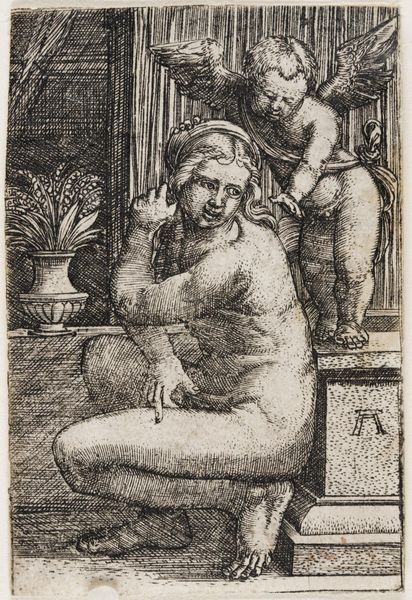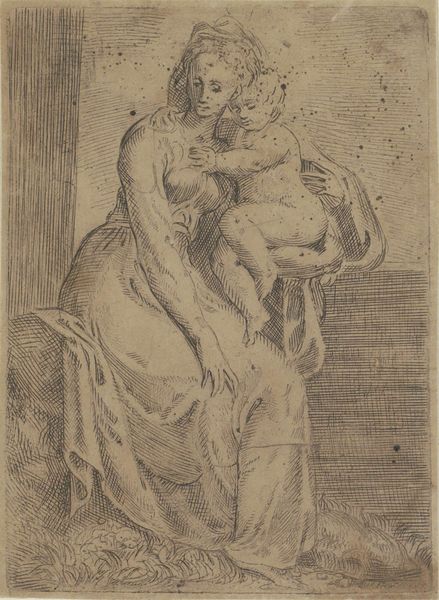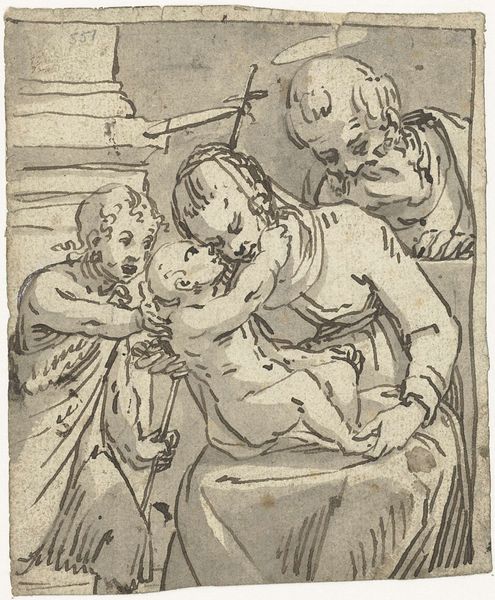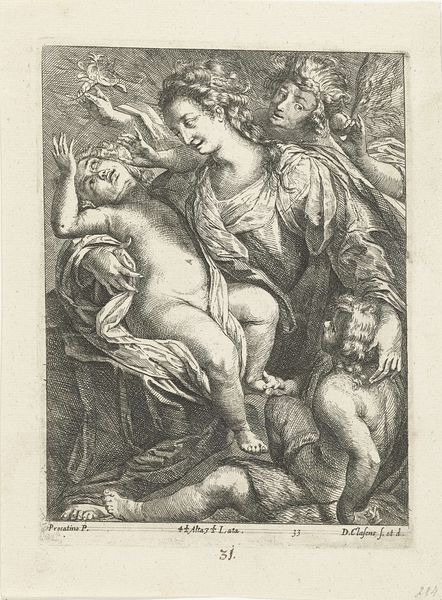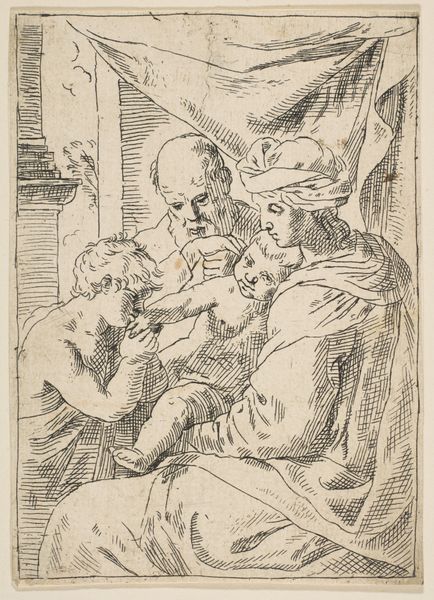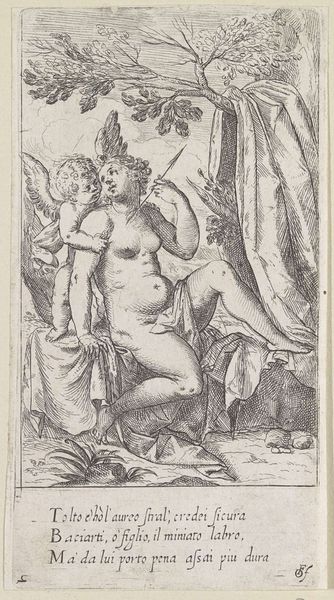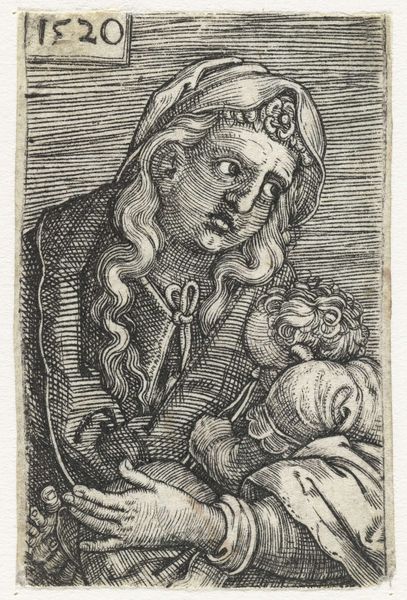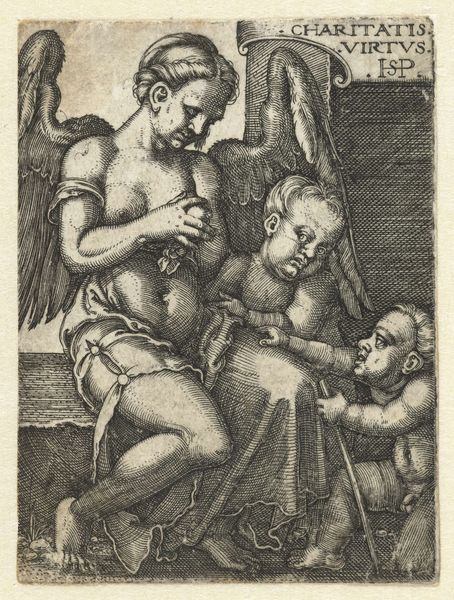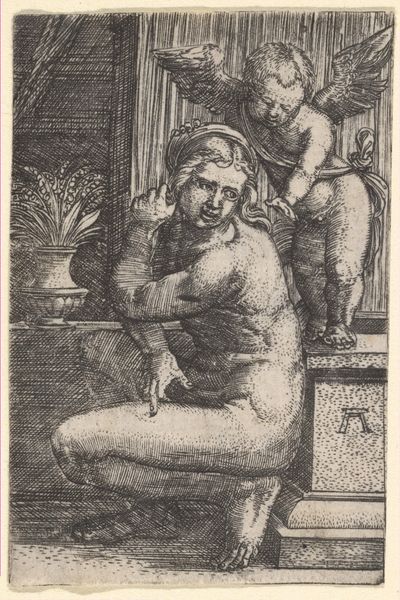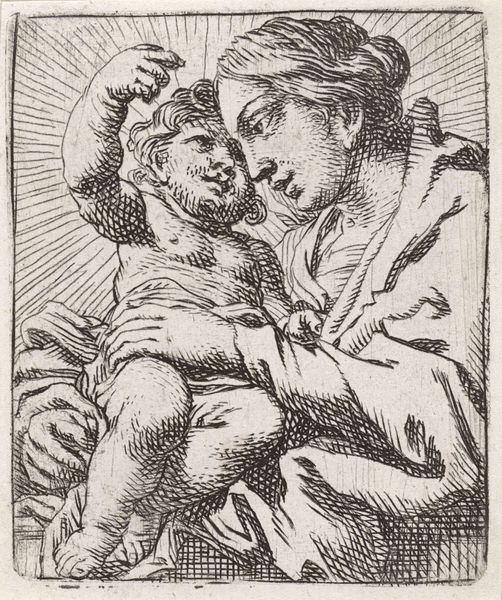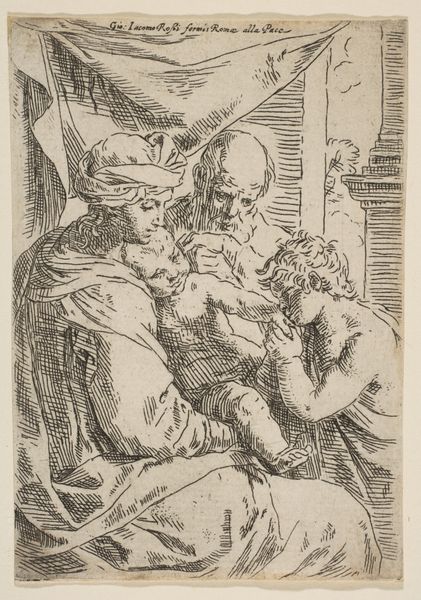
engraving
#
portrait
#
mannerism
#
figuration
#
engraving
Dimensions: height 75 mm, width 53 mm
Copyright: Rijks Museum: Open Domain
Curator: Looking at this engraving entitled “Maria met Christuskind”, made sometime between 1589 and 1667, what catches your eye? Editor: There’s a pronounced artificiality to it. The elongated limbs and almost sculptural rendering of the figures certainly signals Mannerism to me. But the starkness of the medium makes it lack a certain finesse that you’d see in oil. Curator: It's attributed to Anonymous, but we see lettering at the bottom that reads "B. Spranger in", which could refer to Bartholomeus Spranger, who was a significant artist during that period. What implications could that have on its process and creation? Editor: Possibly an engraver interpreting Spranger’s design, hence the less refined quality than what one would expect from his own hand? If it's after Spranger, the visual rhetoric amplifies the source: dynamic posing, theatrical lighting, and figures occupying nearly all picture space. It really intensifies that Mannerist feel. Curator: What do you make of the visual language employed? Considering engraving's rise as a prominent form, do you think it caters more to function or aesthetics, given its affordability and distribution at the time? Editor: The very density of the lines, mimicking a richer tonal range, speaks to the artist’s effort to elevate the medium. Despite its function, it strives for artistry. Note the sharp contrast where light rakes the figures, set against deep shadows etched through hatching—the artist exploits every bit of engraving. Curator: Considering its wide distribution capabilities in comparison to painting, do you reckon the narrative achieves a greater level of widespread dissemination among the working class during its time? Editor: Most definitely. Here, you have a piece of religious propaganda disseminated amongst a wider population; this kind of reproduction brings devotion right into the household. What appears purely aesthetic possesses deep social relevance, and shows engraving fulfilling not just visual but also ideological functions. Curator: Considering its creation as a form of propaganda aimed toward religious purposes, I wonder what impact does it still have nowadays. Editor: It’s still an exquisite display of its time and an example of skill in artmaking using a print medium. I found the image particularly stark in its approach.
Comments
No comments
Be the first to comment and join the conversation on the ultimate creative platform.
